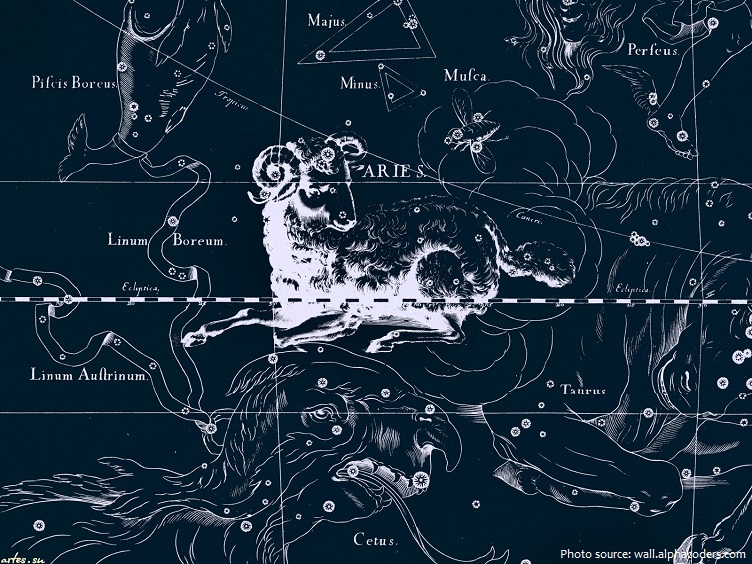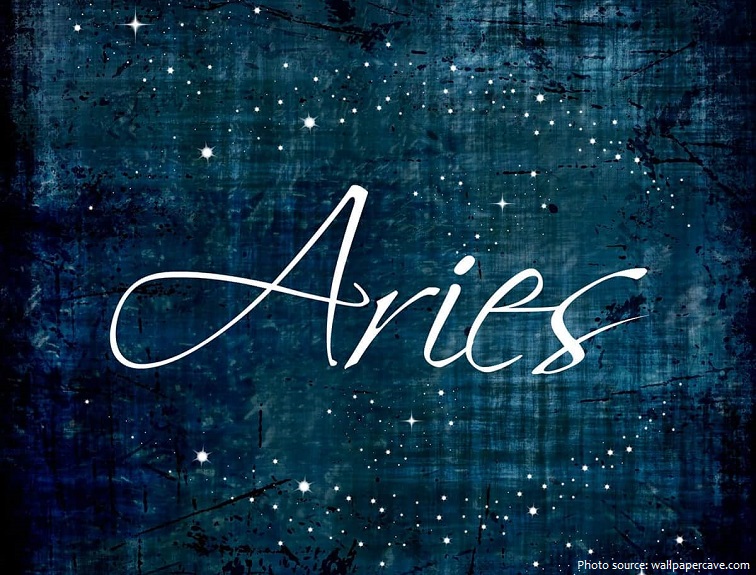
Aries is the first astrological sign in the zodiac, spanning the first 30 degrees of celestial longitude (0°≤ λ <30°), and originates from the constellation of the same name.
The name Aries is Latin for ram. Its symbol is ♈︎.
In astrology, Aries is the cardinal sign of the fire trigon. Cardinal signs also include Cancer, Libra, Capricorn. The cardinal signs are the frontrunners of the zodiac universe as they initiate the beginning of the four seasons. They are known as visionary leaders and self-starters. You can identify these signs with their dynamic behaviour and go-getter attitude.
Aries is the first fire sign in the zodiac, the other fire signs being Leo and Sagittarius.

People born under the Aries zodiac sign people love to be winners. Their competitive nature means that they usually succeed quite well in all areas of their life. If it is a case of working harder or smarter, those under this sign will always succeed. They like to be challenged which means that their lives are rarely boring or repetitive. Their enthusiasm can also reach into the lives of those they care about, by showing them new ways to do things and pushing them to meet their own challenges and make their lives what they desire them to be. Their positivity can mean their personalities are quite magnetic, bringing excitement to everything that they touch.
The color for Aries is red. While red is the color most associated with love, it also the color most frequently associated with hatred, anger, aggression and war.
The signs most compatible with Aries are fellow fire signs Leo and Sagittarius, as well as air signs Gemini and Aquarius.

9th of each month is considered the luckiest date for Ariesdated – dated which are multiple of 9 like 18th and 27th are also considered Lucky dates for Aires. Saturday, Friday, and Tuesdays are considered lucky for Aries.
Mars is the ruling planet for Aries. Day ruler for Aries is Sun and Night Ruler for Aries is Jupiter. The participating ruler for Aries is Saturn.
Aries has represented a ram since late Babylonian times. Before that, the stars of Aries formed a farmhand. Different cultures have incorporated the stars of Aries into different constellations including twin inspectors in China and a porpoise in the Marshall Islands.

In Greek mythology, with the ram with the golden fleece, on the back of which Phrixus, the son of King Athamas, safely fled Thessaly to Colchis, where he sacrificed the ram to Zeus, who placed it in the heavens as the constellation. The ram’s golden fleece was recovered by Jason, leader of the Argonauts.
In ancient Egyptian astronomy, Aries was associated with the god Amon-Ra, who was depicted as a man with a ram’s head and represented fertility and creativity. Because it was the location of the vernal equinox, it was called the “Indicator of the Reborn Sun”. During the times of the year when Aries was prominent, priests would process statues of Amon-Ra to temples, a practice that was modified by Persian astronomers centuries later. Aries acquired the title of “Lord of the Head” in Egypt, referring to its symbolic and mythological importance.

According to traditional Chinese uranography, the modern constellation Aries is located within the western quadrant of the sky, which is symbolized as the White Tiger of the West.
Aries is one of the 48 constellations described by the 2nd century astronomer Ptolemy, and remains one of the 88 modern constellations. It is a mid-sized constellation, ranking 39th overall size, with an area of 441 square degrees (1.1% of the celestial sphere).
Aries, Capricornus and Libra have the fewest stars, with only 50 each.

Aries is a relatively dim constellation, possessing only four bright stars: Hamal (Alpha Arietis, second magnitude), Sheratan (Beta Arietis, third magnitude), Mesarthim (Gamma Arietis, fourth magnitude), and 41 Arietis (also fourth magnitude). The few deep-sky objects within the constellation are quite faint and include several pairs of interacting galaxies. Several meteor showers appear to radiate from Aries, including the Daytime Arietids and the Epsilon Arietids.
According to the tropical system of astrology, the Sun enters the sign of Aries when it reaches the March equinox, which occurs on average on March 21 (by design). Because the Earth takes approximately 365.24 days to go around the Sun, the precise time of the equinox is not the same each year, and generally will occur about six hours later from one year to the next until reset by a leap year. February 29 of a leap year causes that year’s vernal equinox to fall about eighteen hours earlier—according to the calendar—compared with the previous year. From 1800 to 2050 inclusive the vernal equinox date has (or will) range(d) from March 19 at 22:34 UT1 in 2048 to March 21 at 19:15 UT1 in 1903.